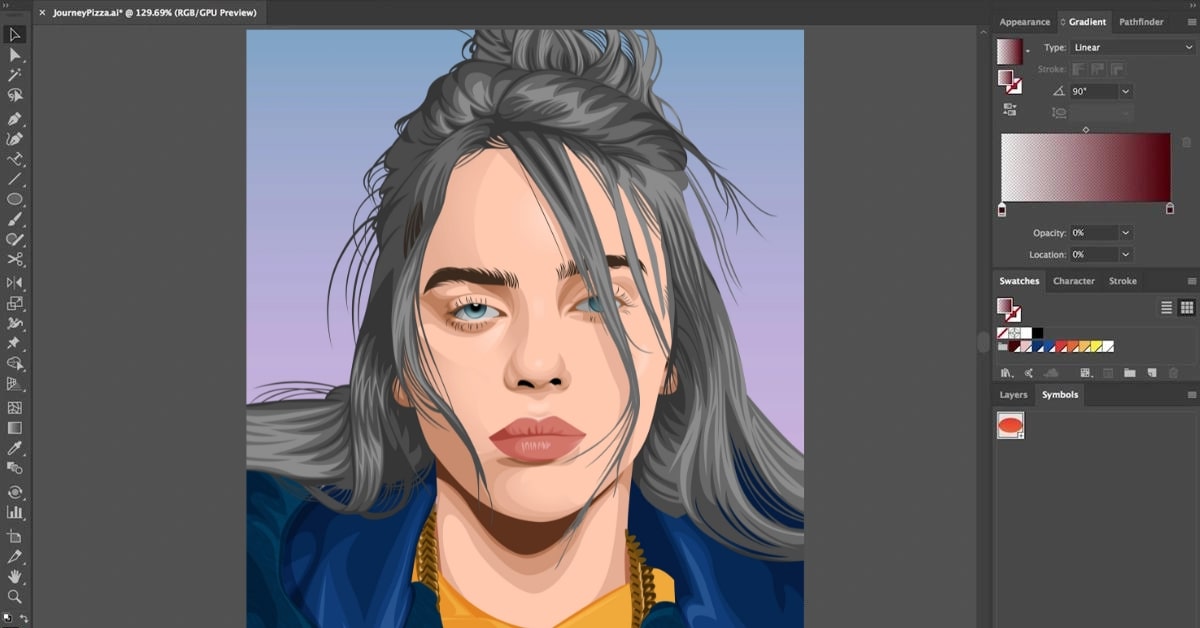In the dynamic realm of graphic design and illustration, the question often arises: can you turn a raster image into a vector? The answer is a resounding yes. The process of converting raster images, composed of pixels, into vector graphics is a transformative technique that offers scalability, adaptability, and improved clarity. This article will explore the methods, significance, and applications of turning raster images into vectors, shedding light on a process that opens new possibilities for designers and creators.
Understanding Raster to Vector Conversion
Raster images, including formats like JPEG, PNG, or GIF, are composed of pixels, making them resolution-dependent and potentially losing quality when resized. Vector graphics, on the other hand, use mathematical equations to define shapes, allowing for scalability without pixelation. Turning a raster image into a vector involves the conversion of pixel-based information into mathematical paths and shapes.
Methods for Raster to Vector Conversion
- Automated Conversion Tools:
- Online tools like Vector Magic, Adobe Illustrator’s Image Trace feature, or other specialized converters use algorithms to automatically trace and convert raster images into vectors.
- These tools often provide user-friendly interfaces, allowing users to upload images and receive vectorized results.
- Manual Tracing in Graphic Design Software:
- Design software like Adobe Illustrator, CorelDRAW, or Inkscape allows for manual tracing of raster images using tools such as the Pen tool.
- This method provides greater control over the conversion process, enabling users to refine details and shapes.
- Third-Party Services:
- Some design services or professionals specialize in raster to vector conversions, offering high-quality results with attention to detail.
- These services are particularly beneficial for complex or highly detailed images.
Steps for Raster to Vector Conversion
- Select and Import Image:
- Choose the raster image you want to convert and import it into a vectorization tool or graphic design software.
- Choose Conversion Settings:
- Adjust settings such as detail level, color options, or smoothing based on the characteristics of the image and desired vector output.
- Initiate Conversion:
- Click on the “Convert” or “Trace” button to start the conversion process. Automated tools will analyze the image and generate vector paths.
- Refine and Edit (if needed):
- After conversion, refine vector paths using editing tools to adjust shapes, colors, or details as required.
- Save as Vector File:
- Once satisfied with the vectorized result, save the file in vector formats like SVG, AI, or EPS.
Benefits of Raster to Vector Conversion
- Scalability and Quality Preservation: Vector images maintain quality and clarity at any size, ensuring versatility and adaptability.
- Editing Flexibility: Vector graphics allow for easy modification of individual elements without loss of quality.
- Compatibility and Versatility: Vector images are compatible across different design software and platforms, ensuring adaptability in various workflows.
- Print and Web Use: Vector graphics are ideal for high-quality prints and web graphics, contributing to faster loading times.
Applications of Converted Vector Images
- Logo Design and Branding: Vector graphics are perfect for creating logos and brand assets due to their scalability and adaptability.
- Illustrations and Artwork: Artists leverage vector graphics to create detailed and scalable illustrations.
- Web Design and Icons: Vector images are preferred for web design, icons, and user interfaces in applications and websites.
Conclusion
Turning a raster image into a vector is a transformative process that empowers designers and creators with scalable, editable, and versatile graphics. By employing the outlined methods and understanding the benefits of raster to vector conversion, individuals can seamlessly transition between image formats, enhancing their creative capabilities and opening new avenues for impactful visual communication.
FAQs
Can any raster image be converted into a vector?
Most raster images can be converted, but complex or highly detailed images might require additional adjustments for optimal conversion.
Are there limitations to the size or resolution of raster images suitable for efficient conversion to vectors?
Larger images might impact processing speed, and extremely high-resolution images might require more resources.
Can vectors created from raster images be further edited or customized?
Yes, vectors created from raster images can be further edited, modified, or customized within compatible design software.
Do converted vectors retain all details from the original raster image?
Automated converters attempt to retain details, but complex images might require manual adjustments for accuracy.
This page was last edited on 27 February 2024, at 11:32 am
